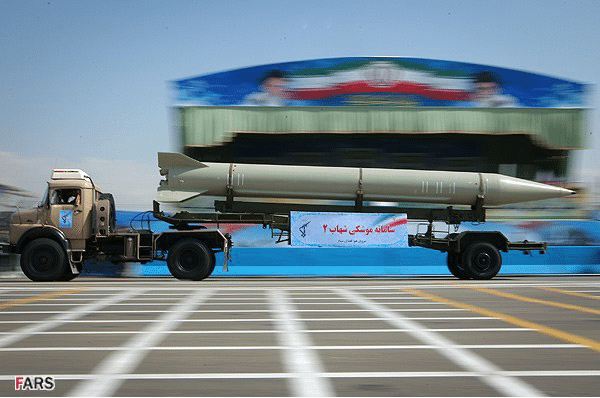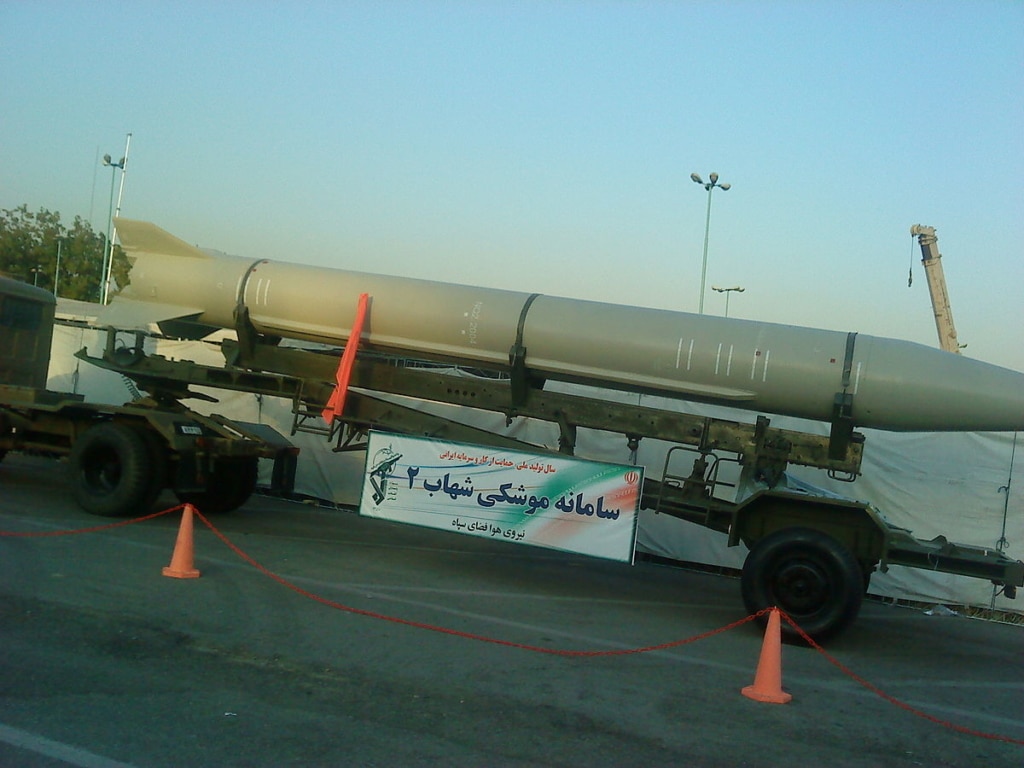The Shahab-2 is the Iranian variant of the Russian SS-1D ‘Scud C’. It is a single-stage, liquid-propelled, short-range ballistic missile. Its maximum range is 500 km, and it carries a single warhead with the maximum payload of 770 kg.
Shahab-2 at a Glance
- Originated from
- Iran, North Korea
- Possessed by
- Iran
- Class
- Short-Range Ballistic Missile (SRBM)
- Basing
- Road-mobile
- Length
- 10.94 or 11.5 m
- Diameter
- 0.88 m
- Launch weight
- 6,095 kg
- Payload
- 770 kg
- Warhead
- High explosive (HE)
- Propulsion
- Single-stage liquid propellant
- Range
- 500 km
- Status
- Operational
- In service
- 1997 – present


Shahab-2 Development
Shahab-2 measures approximately 11 m, with a launch weight of 6,095 kg. This missile presumably carries a conventional high explosive warhead, although it may be weapons of mass destruction capable.1 Iran received between 100 and 170 Scud C missiles in 1997, which it used to start a domestic production.2 The Shahab-2 has the same external dimensions as the Shahab-1 missile, but the combination of a larger fuel and oxidizer load and a lighter payload allows the missile to achieve its longer 500 km range.3 Due to its longer range, the Shahab-2 likely has worse accuracy than the Shahab-1 despite using a similar guidance system, with estimates placing its CEP at around 1,500 m.4
The Shahab-2 was tested in July 1998 following its introduction into service in 1997. In 2004, the missile became an active participant in all military drills and exercises.
Iran may have aided Syria by building a Scud-C production facility in Hama.5
Qiam-1
An improved variant, Qiam-1, was first tested on August 10, 2010. The Qiam-1 is very similar to the Shahab-2, but it has a triconic shaped reentry vehicle, heavier launch weight (6,155 kg), smaller payload (750 kg), longer range (800 km), and enhanced accuracy (500 m CEP).6 Iran conducted a second successful flight test on February 10, 2014, and a third on March 9, 2016 during a larger military exercise.7 According to Iranian media, Iran fired at least one Qiam-1 missile in its ballistic missile strike against ISIS targets in Syria on June 18, 2017.
Footnotes
- Andrew Feickert, “Iran’s Ballistic Missile Capabilities,” 3, (Congressional Research Service, August 23, 2004), http://fpc.state.gov/documents/organization/39332.pdf.
- Ibid.
- The International Institute for Strategic Studies, Open-Source Analysis of Iran’s Missile and UAV Capabilities and Proliferation (East Sussex: Hastings Print, April 2021), 10.
- Ibid., 10
- Nuclear Threat Initiative, “Hama Missile Base and Production Facility,” (NTI), http://www.nti.org/learn/facilities/484/.
- Duncan Lennox. “Shahab 2 (Qiam, SS-1D ‘Scud C’ Variant.” Jane’s Strategic Weapon Systems (Offensive Weapons). September 10, 2012.
- CSIS Missile Threat, “Iranian Missile Launches: 1988-Present,” August 17, 2017, https://missilethreat.csis.org/iranian-missile-launches-1988-present/.